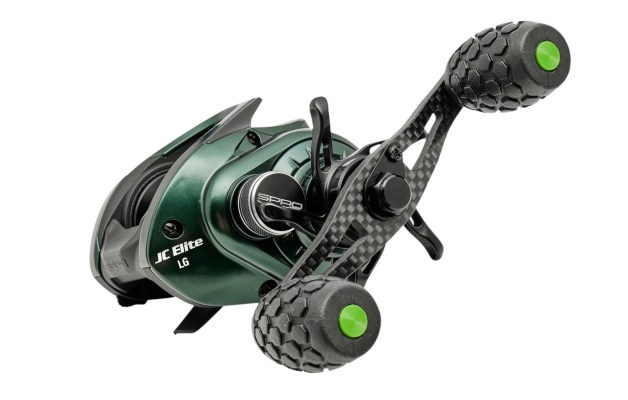
Back in June at The Genuity River Rumble, I was reminded of a couple of important lessons about fishing line and its effect on lure performance. I'd like to take this opportunity to share them with you.
During practice it became obvious to me that I was going to have to target the same Mississippi River fish for three or four days. There weren't enough productive places — shallow, backwater sloughs — to do anything else.
I also knew from prior experience that bass won't hit the same lures day after day. As a consequence I launched Thursday morning with a little bit of everything tied on my rods — flipping plastics, spinnerbaits, crankbaits and even a couple of topwater plugs. My goal was to avoid conditioning my bass if I could.
That strategy worked well for me on Thursday and for about half the day on Friday. Then the wind died down, everything went dead still and the water slicked over like glass. I was left with no option other than to throw my favorite shallow-running, square-billed crankbait, a WEC E1.
It was a perfect choice — right size, right wiggle and nearly weedless — for the water I was fishing … except that it was running a little too deep. On about half the casts it was dragging bottom and picking up small pieces of decaying leaves. That ruined its action. Even worse, it was fouling before it got to my log or stump. I was wasting half my time.
After the weigh-in Friday afternoon, I decided to change lines. I nearly always throw my crankbaits on 15-pound-test Vicious Fluorocarbon line. Regardless, I knew that if I expected to keep my bait out of the leaves I had to go with something that had a bigger diameter, something that would help pull the lure away from the bottom.
I spooled one reel with 17-pound Vicious Fluorocarbon and another with 17-pound Vicious Ultimate, a high-quality copolymer monofilament line. I figured one of them would give me what I wanted — a little less running depth without destroying the vibration of my bait.
It did just that. With the Vicious Ultimate, my tiny crankbait was running 4 to 6 inches shallower than it had been on 15-pound-test Fluorocarbon. I didn't foul another cast. (The heavier fluorocarbon also kept my lure up, but I settled on the copolymer for reasons that I'll discuss in a minute.)
A few inches might not sound like much, but keep in mind I was making very short casts — the depth change would have been much greater on a long cast — and that's all I needed to efficiently fish water that was no more than 3 feet deep.
While I'm telling this story, however, I want to emphasize that the opposite is equally true. If you need a little more depth, go with a lighter test weight line. And remember, fluorocarbon is heavy and it sinks. It'll get you down quicker and deeper than monofilament or copolymer, which are lighter and tend to float. Depending upon conditions, one will perform better than the other for you.
In the process of throwing the same model crankbait using two different types of line with the same test weights and thrown on the same model rod and reel, I was reminded of something else as well — the lack of sensitivity of copolymer line.
I can't remember another occasion when I was able to compare line types the way I did that Saturday. It was an almost perfect test. I'm still amazed at the difference in sensitivity between fluorocarbon and copolymer. It's like night and day. There's no comparison.
That discovery forced me to ask myself if greater line sensitivity is a good thing. My answer is, "Not always."
The lack of sensitivity in my Vicious copolymer line on Saturday and Sunday actually helped me catch bass and win my first Elite Series tournament. I didn't feel every bite the second it happened. That slowed down my hook set by an instant which gave the bass a little extra time to get the lure further back in their mouths.
I didn't lose a fish those two days — not one. In fact, I saw several of them jump but couldn't see the crankbait. It was too far back in their mouths. That probably wouldn't have happened with fluorocarbon. I'd have set the hook too quick.
Again, the opposite is worth mentioning. I don't want you to get too carried away here. A lack of sensitivity isn't what you want on long casts, in deep water or with some lures — jigs and plastics are the first that come to mind. Sensitivity, or a lack of it, is a tool, just like everything else in your boat and tacklebox. It should be used as needed.
Think about my experiences on the Mississippi River the next time you go fishing. Your line is more than a string that connects your lure to your rod and reel.




